Reality Check: Who gets social care and who pays for it?
- Published
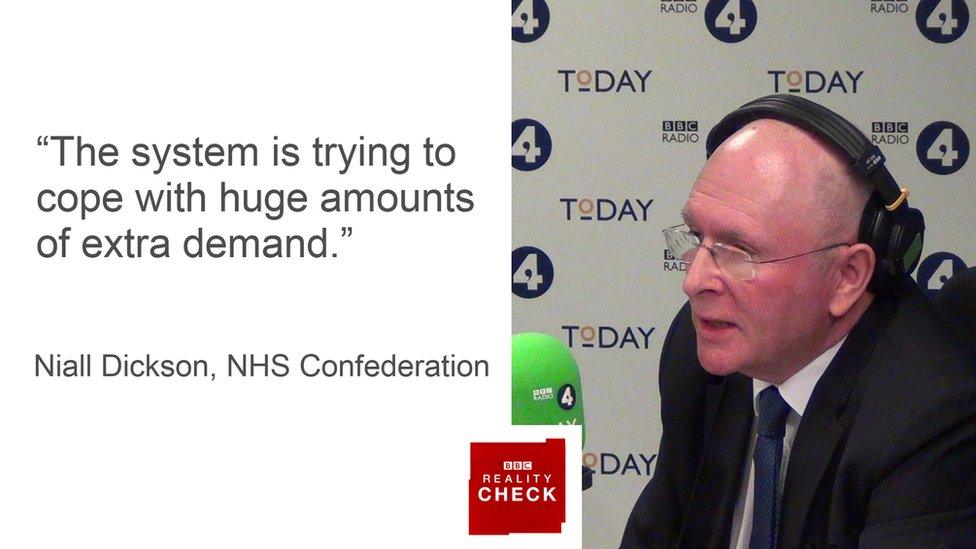
We know our population is ageing and, as we live longer, many of us will need support in old age. There has also been an increase in the numbers of people living with a disability who may rely on some level of social care.
Niall Dickson, the head of the NHS Confederation, which represents NHS providers, told BBC Radio 4's Today programme that the system was trying to cope with "huge amounts of extra demand" as a result of there being "many many more" older people.
Between 2005 and 2015, the number of people aged 65 and over in the UK increased by 21%, while the number aged 85 and over increased by 31%.
More than a million more people were living with a disability in the UK in 2016 than 10 years earlier because people are living longer with disabilities than before. This is all good news.
But at the same time, directors of adult social services in England say they have had to cut £4.6bn from their budgets since 2010.
So who is getting care, what kind of care are they getting and who is paying for it?
Unlike the NHS, in England social care is not free at the point of delivery - a lot of people have to pay for at least some of their care, and a lot of that care is delivered by private providers.
That can be anything from someone coming to your house to help you get out of bed or washed, to full-time accommodation in a care home.
It's a little different in the rest of the UK - home care is capped at £60 a week in Wales and free for the over-75s in Northern Ireland, while Scotland provides free personal care, that is help with things such as washing and dressing, in both care homes and people's own homes.
The UK Homecare Association estimates that more than 70% of homecare services in the UK are bought by local authorities, with the rest bought by people paying for their care themselves.
In 2014-15, that equated to 646,000 people being cared for in their homes with the state paying.
This doesn't necessarily mean 70% of people who need care at home are paid for by the state.
In 2015, Age UK estimated that more than a million older people in England were living with unmet social care needs (such as not receiving assistance with bathing and dressing), a rise from 800,000 in 2010.
People not eligible for funding may just be doing without the care they really need or relying on informal care from friends and family.
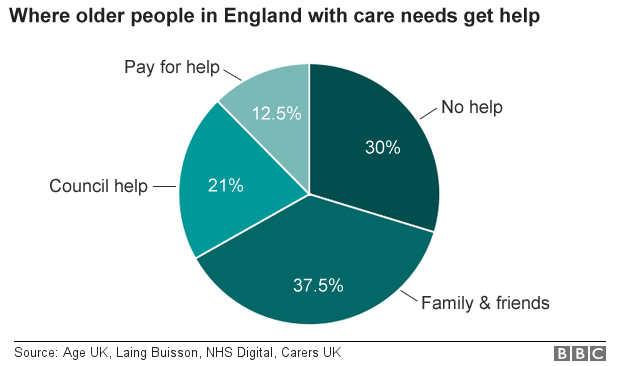
When it comes to residential care, the latest figures from 2014 suggest local authorities across the UK paid for 37% of people, while the NHS funded 10% of care home places.
The rest was made up of people who either paid for all of their care (41%), or topped it up with a contribution from their local council (12%).
On 31 March 2016, in England, there were 199,305 people in nursing and residential home places and 452,990 people accessing long-term care in the community for whom the local council had some role in funding or providing care or assessing the needs of the person receiving it.
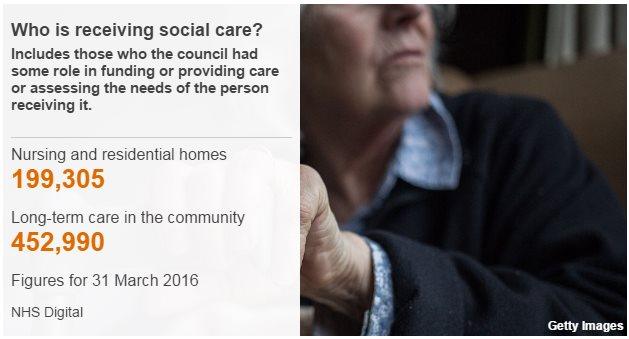
The most recent data doesn't tell us how many people were cared for overall in England, but we can say that there were 1.8 million requests for support in 2015-16.
Of those, 28% were from people aged 18-64 and the remaining 72% were aged 65 and over.
But of these requests, 57% resulted in no direct support from the council.
For the over-65 group, almost a quarter of requests for support were from people being discharged from hospital.
Think tank the King's Fund says the number of older people getting state-funded help in England alone fell by 26% between 2009 and 2014.
This is in the context of an ageing population.
The government has said English councils' social care departments are getting an extra £3.5bn by 2020.
Almost £2bn of this comes from council tax, which local authorities have been allowed to raise by 3% this year and next year provided they spend it on adult social care.



- Published8 February 2017

- Published6 February 2017
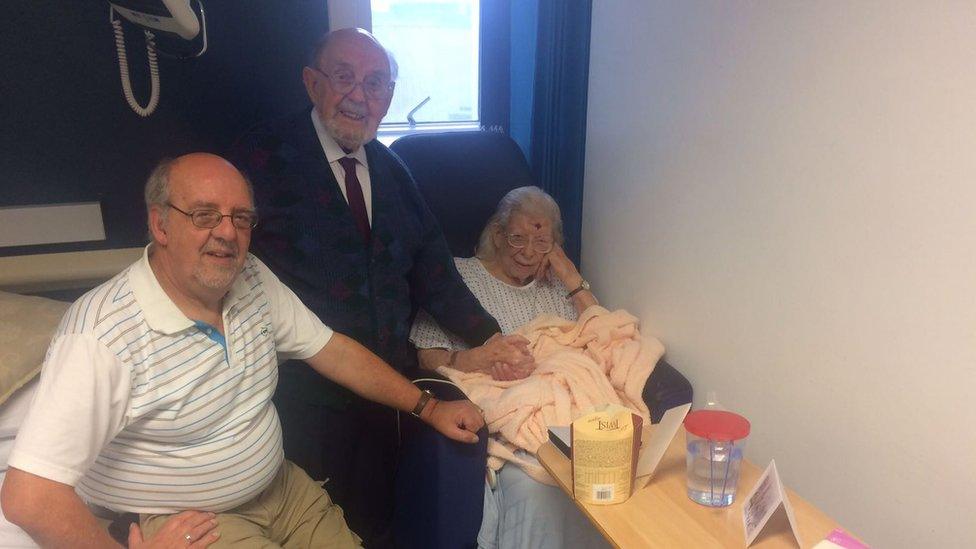
- Published6 January 2017
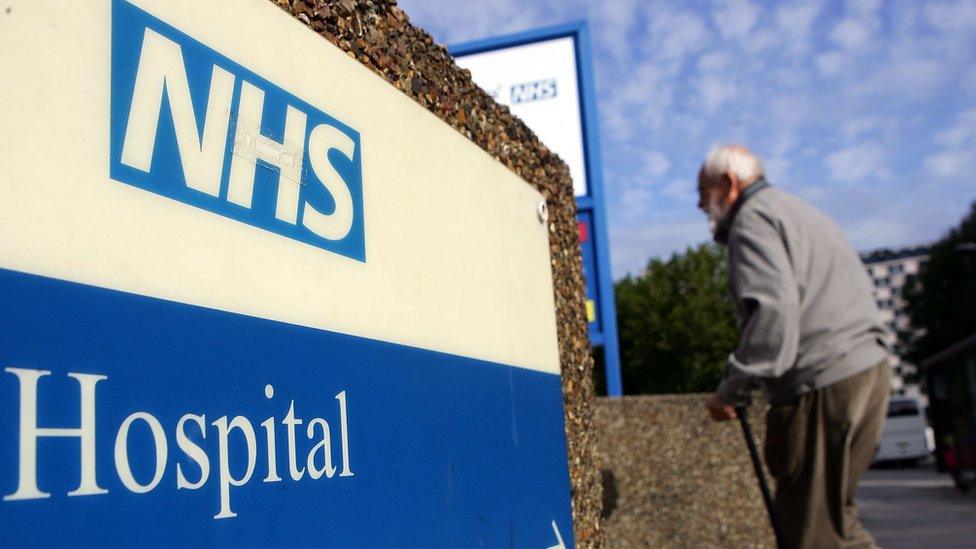
- Published13 December 2016
- Published12 December 2016
